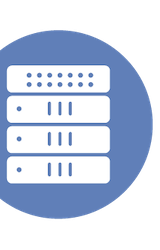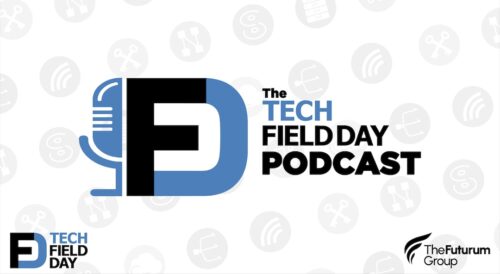Cloud Field Day has always offered a live stream of presentations for anyone to watch and enjoy, but its not often we see watch parties organized around the presentations. That’s what Nick Howell did for the presentations from Morpheus Data and NetApp. It’s a really unique way to watch the presentation, with live commentary from Nick, as well as an integrated chat for replay.
Preparing for Cloud Field Day 8
Lino Telera attended his fourth Field Day event during the virtual Cloud Field Day. In this post, he gives a preview of what he expected to see from each of the presenters. He was particularly interested to learn about Terraform Cloud from HashiCorp, and the application abstraction layer Spektra from Diamanti. Be sure to check out all his thoughts on the presenters before diving into the videos for yourself. We have an extensive archive of Field Day videos, stretching back years across all our events. It’s an invaluable resource for keeping up to date with the latest in IT.
Cloud Field Day 8 Prep – Daily Check-In for June 17, 2020
In this Daily Check-In video from Ned Bellavance, he digs into his homework ahead of seeing presentations at Cloud Field Day. He introduces his audience to the whole Field Day experience, and runs down the presenters to talk about what he expects to see. If you haven’t been checking out Ned’s daily check-in videos, be sure to subscribe to his channel for more!
Hybrid Cloud Might Be the Right Solution for Data Analytics
With ever-expanding data sets and machine learning capabilities, organizations are exploring cloud solutions for access to resources not available in their on-premises datacenters. Hybrid cloud is becoming the de facto approach to cloud for many. Organizations wanting to take advantage of analytics for large data sets are finding it’s often simpler and more cost-effective to make use of cloud resources. NetApp’s Data Availability-as-a-Service solution provides a simple method for using hybrid cloud to provide access to those resources. It was designed with the IT non-expert in mind. Thanks to a deep dive at Storage Field Day, this post breaks down all the details.
NetApp Fabric Orchestrator and Hybrid Cloud
NetApp discussing its Data Fabric strategy for a few years now. In this post, Chris Evans looks at one of the key components of it, Fabric Orchestrator. He sees it as a natural evolution from their Cloud Orchestrator, and reflects a lot of the IP the company acquired with Greenqloud and StackPointCloud. Fabric Orchestrator introduces workflow to manage how to apply policies to data sets, independent of how they are attached to applications. This allows for data to be tiered to either less expensive on-premises storage or into the cloud. Chris thinks NetApp is developing an approach to data mobility in a way that aligns with their existing market, evolving their products as their business needs change.
StorageGRID Gets Gritty
Object storage has a reputation for being “cheap and deep”, offering scalable, affordable storage without much in the way of performance considerations. At Storage Field Day, Chin-Fah Heoh liked that NetApp challenged that narrative with their StorageGRID Webscale (SGWS) solution. With all-flash solutions available, SGWS is not a new platform, but offers new performance capabilities with a very mature software backend. While Chin-Fah wonder what might have been if NetApp had pivoted the platform to performance a little earlier, he sees the company properly positioning the solution for the general purpose object storage market.
NetApp and the StorageGRID Evolution
Dan Frith is no stranger with Storage Field Day and the storage industry at large. It’s that kind of deep expertise that lends itself to excellent analysis of each presenter. In this post, Dan breaks down the updates he heard from NetApp on their object storage platform, StorageGRID. For Dan, the update really shows how the workloads people are using for object storage have changed, and how NetApp is working to stay on top of this to offer a compelling product to customers. They also showed off new hardware in the form of the SG1000 compute appliance, the dense SG6060 with a 2PB per node capacity, and the all-flash SGF6024. With Dan’s background with service providers, he really appreciates the flexible deployment models NetApp offers, with multi-tenancy built into the solution from the ground up.
NetApp NKS and Hybrid Cloud
If you’ve been following IT at all in the past few years, you’ll have seen Kubernetes gaining popularity as a standard for running containerized applications across multiple platforms either in public or private cloud. But Kubernetes is not the easiest solution to deploy and maintain, hence the emergence of different service offerings around it. In this post, Chris Evans digs into NetApp Kubernetes Service, which the company went into detail about at Cloud Field Day last year. This offering came out of NetApp’s acquisition of StackPointCloud in 2018. For Chris, the question of “why NetApp” for a Kubernetes service is answered by the company’s embrace of the public cloud in their strategy, with NKS an enabler of their overall Data Fabric concept.
Preview Storage Field Day 19 – Day 1
Arjan Timmerman put together a series of videos previewing what he expected to see at Storage Field Day. This video sets out some background on Tiger Technology, NetApp and Western Digital. These represent an interesting selection of experience with the event. Tiger Technology is new to the Field Day family, but has been a force in the media and entertainment space since 2004. NetApp has a long history both in enterprise storage and presenting at Storage Field Day. And Western Digital is an iconic provider of storage who is quickly becoming a familiar sight at the event. Arjan was excited to hear from each company at the event, and we can’t wait to hear more of his thoughts on the presentations going forward.
TECHunplugged VideoCast SFD19 Part 1
It’s always great to have TECHunplugged’s Arjan Timmerman as a delegate at an event, and we were thrilled to have him attend Storage Field Day. This was Arjan’s fourteenth time around the table to get caught up on the latest in enterprise storage, and his enthusiasm for the experience is infectious. In this video, he previews what he expected from each of the presenters. The event had a fantastic array of presenting companies, with the latest from Dell EMC, Infrascale, Komprise, MinIO, NetApp, Tiger Technology, WekaIO, and Western Digital. Be sure to check out the preview before diving into our comprehensive video coverage.
Hadoop Is Truly Dead – LOTR Version
Chin-Fah Heoh didn’t initially set out to write a post declaring the death of Hadoop. But what he heard at Storage Field Day made it seem like he had to. While at the event, he participated in the On-Premise IT Roundtable podcast at Pure Storage, ostensibly to talk about storage metrics. However Hadoop quickly became the focus of the discussion. From there, other presentations further showed solutions that made it impossible to consider any other premise. Because this is the world of technology, Chin-Fah doesn’t think it’s impossible for Hadoop to live again in some other fashion, but right now the case is beyond terminal.
Top 5 Takeaways From #SFD19 Day 1
One of the great things about Field Day events is that they are live streamed on the internet, expanding our pool of delegates from the dozen individuals in the room to a much wider audience. We always love to hear people’s impression from the live stream, and Jason Benedicic has a great write up with his takeaways from our recent Storage Field Day event. For Jason, the event showed the breadth of quality engineering talent from across the world, showed NetApp’s exciting solutions with Active IQ and StorageGRID, and demonstrated that spinning disks aren’t dead yet. Be sure to check out all his thoughts in this post, and if you’ve watched the Storage Field Day presentations, why not share your big takeaways as well!
Storage Field Day 19 RoundUp
Storage Field Day is our first event of 2020, and we’ve got a packed roster of companies to present. It’s exciting to have a mix of familiar faces like NetApp and Dell EMC presenting with companies new to the event like Tiger Technology and Minio. Enrico Signoretti will be around the delegate table, asking questions and creating dialogue to help make Storage Field the unique event that it is. If that isn’t enough to get you excited, there is the always provocative “secret company” presenting at the event. Be sure to mark your calendar and unravel the mystery with us on the live stream.
Storage Field Day 19 – Vendor Previews
Chris Evans is no stranger to storage. His voice and experience is always welcome around the delegate table, and in this post, he brings both in previewing the presenting companies. He’s looking forward to the second day and hearing about Dell EMC doing deep dives into Isilon, DevOps and PowerOne. There are also a number of new presenters that Chris doesn’t have much background with. These include the DRaaS company Infrascale, the open-source enterprise-class object storage platform from MinIO, and Tiger Technologies. Tiger is competing in the crowded software-defined storage market, so Chris is interested to see how they will differentiate themselves. Western Digital will also be an interesting presentation, as the company has shifted it’s enterprise storage vision. Overall, it sounds like there’s not much Chris isn’t looking forward to at the event.
Storage Field Day 19: Getting Back to My Roots
Gina Rosenthal has extensive history in the storage industry, and we’re thrilled to now have her in the delegate ranks. In this post, she highlights what she’s looking forward to at the event. This includes a debut presentations from Tiger Technology, Infrascale, and Minio, as well as Gina’s second presentation from NetApp. There are many other presenters on tap, so be sure to mark your calendar for the event. We’ll have videos posted soon after the event, so even if you don’t catch the live stream, you can still watch all the storage goodness.
NetApp Goes to the Cloud
NetApp highlighted many of their cloud offerings at Tech Field Day late last year. Gina Rosenthal was a delegate at the event, and thinks that they have the right team and attitude to make multi-cloud a reality for their customers. The key focus for NetApp was making it easy to get customers to the cloud, which fits with their approach of shepherding traditional operations teams into the new cloud native era.
NetApp Fabric Orchestrator, One More Step in the Right Direction
Enrico Signoretti has watched NetApp realize their Data Fabric strategy over the last few years, as the company shifted from traditional storage to hybrid cloud data management. He heard the company present on their Fabric Orchestrator at Tech Field Day, and this seems to be the next evolution of that vision, enabling seamless application and data mobility across on-premises and public cloud infrastructure.
NetApp and the Cloud Conundrum
Ned Bellavance got to hear from NetApp at Cloud Field Day. Being traditionally thought of as a storage company, it might have struck some as a little odd to see them at the event. But Ned does a great job of breaking down the challenges the cloud has presented to a company like NetApp, and how the company’s strategy indicates they have a plan to stay relevant for a long time.
NetApp HCI: Hyper Converged or Hybrid Cloud Infrastructure
Arjan Timmerman is back on the blogging beat and covering the last Field Day event he attended. In this post, he’s covering the presentations from Tech Field Day Extra at NetApp Insight 2018. It’s an interesting post that has some added perspective given the time that’s passed. We can’t wait to see more great writing from Arjan!
NetApp CFD6 – Hot Take
In this hot take from Keith Townsend, he looks at what NetApp showed off at Cloud Field Day. Keith is no stranger to hearing from the company, but this session had a deep technical focus. They looked at where does NetApp’s Kubernetes service run its compute. They reviewed how they separate their control plane from the cloud underlay and deploy instances large enough to support the Kubernetes infrastructure next to storage and other workloads.








